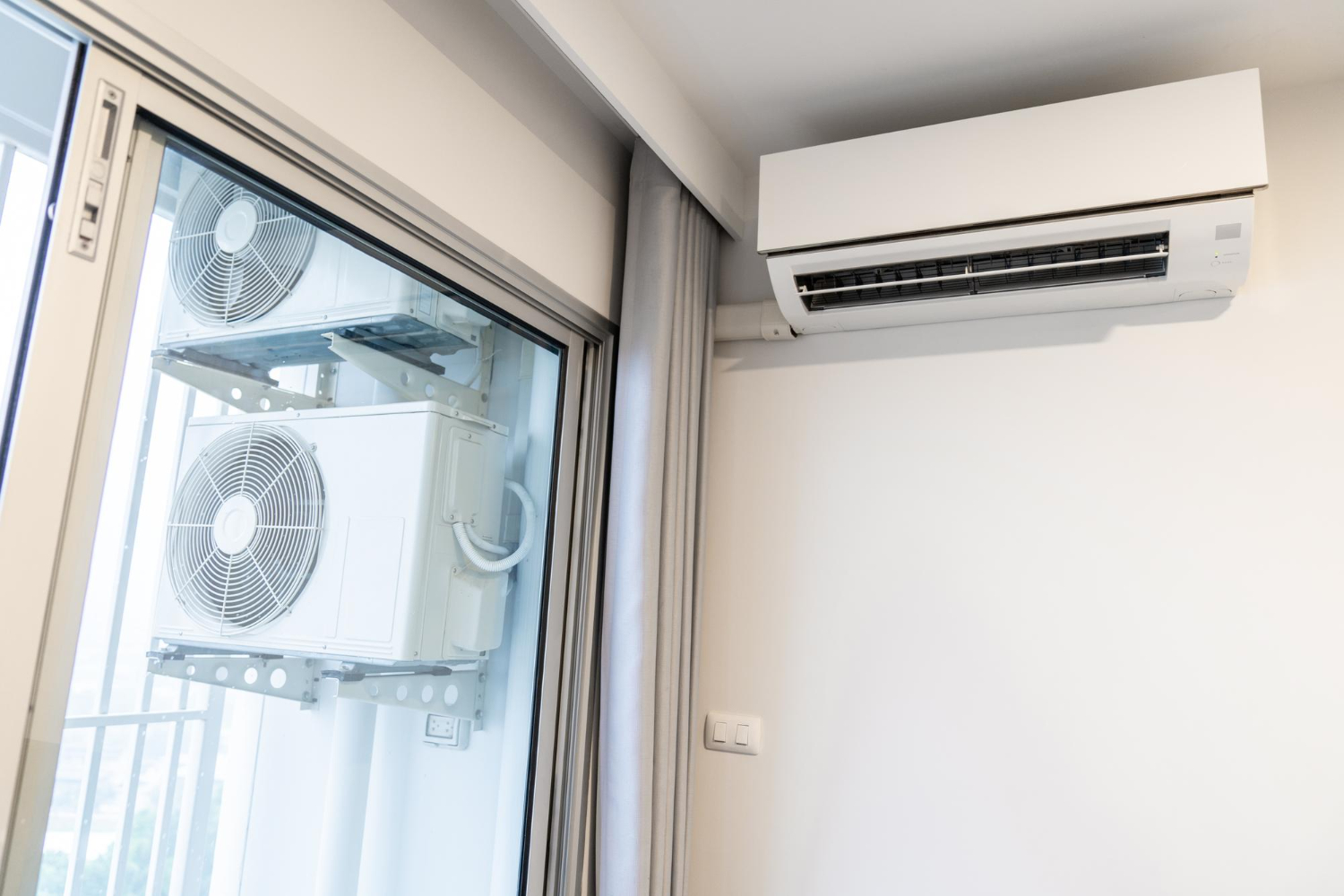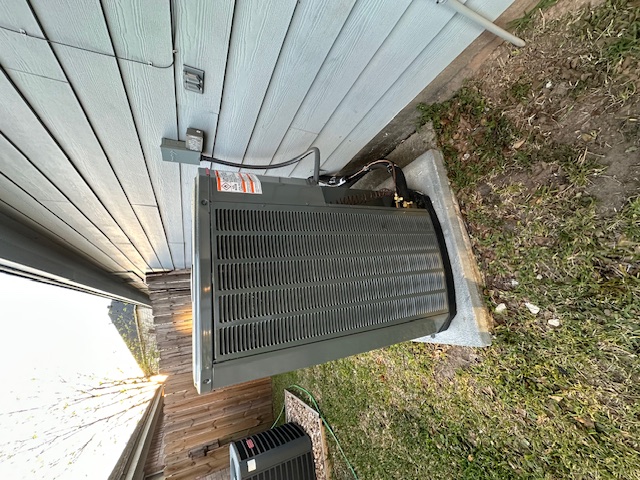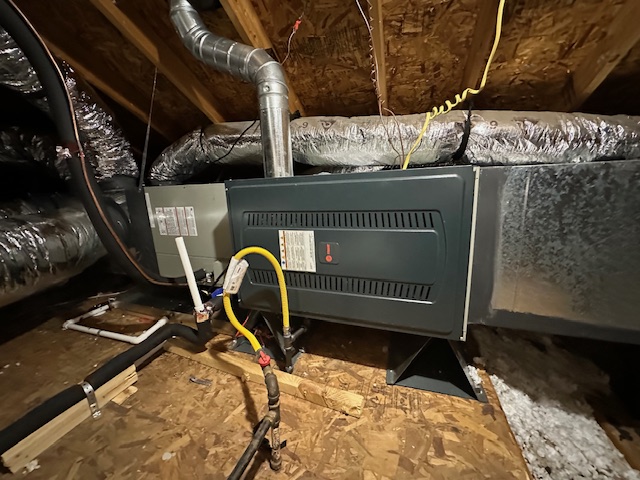Air conditioning systems do much more than keep homes cool during hot weather. These systems directly impact the quality of air people breathe indoors by filtering particles, controlling humidity levels, and circulating air throughout living spaces. The relationship between AC units and indoor air quality can either improve or harm the air inside homes.
Most people spend around 90% of their time indoors, making indoor air quality a key factor for health and comfort. AC systems can remove dust, pollen, and other airborne particles when working properly. However, poorly maintained units can actually make air quality worse by spreading pollutants or creating moisture problems.
Simple maintenance steps, filter upgrades, and knowing when to seek professional help can turn any AC unit into a tool for cleaner, healthier indoor air.
In this article, you’ll learn how AC affects indoor air quality and which filters, settings, and upgrades actually improve IAQ in real homes.
Here’s what you need to know.
- How AC equipment can help or hurt indoor air quality
- The role of AC filters and smarter upgrades
- Common myths and the $5000 AC rule in context
- Easy maintenance moves that boost IAQ fast
- Getting local help without guesswork
Keep reading! Understanding how air conditioning affects indoor air quality helps homeowners make better choices about their cooling systems.
How AC equipment can help or hurt indoor air quality
AC systems can both clean and pollute indoor air depending on their condition and maintenance. Proper filtration removes allergens while dirty equipment spreads contaminants throughout your home.
Does AC improve indoor air quality and when results vary
AC systems can improve indoor air quality through filtration and air circulation. Modern units come with filters that capture dust, pollen, and pet dander from the air. These filters remove particles that cause allergies and breathing problems.
The quality of filtration depends on the filter type. Basic filters only catch large particles. High-efficiency filters remove smaller pollutants like bacteria and smoke particles.
Results vary based on several factors:
- Filter quality: HEPA filters work better than basic fiberglass filters
- Maintenance schedule: Clogged filters reduce effectiveness
- System design: Some units recirculate air without bringing in fresh air from outside
AC systems that only recirculate indoor air can make pollution worse. They move the same contaminated air around the house without removing harmful gases like volatile organic compounds (VOCs).
Why dirty coils and ducts spread irritants you can't see
Dirty AC equipment becomes a source of indoor air pollution. Dust and moisture collect on coils, creating breeding grounds for mold and bacteria. These contaminants then spread through the air when the system runs.
Evaporator coils get dirty from normal use. When filters fail to catch particles, debris builds up on the coils. Moisture from cooling creates perfect conditions for mold growth.
Dirty ductwork spreads pollution throughout the home:
- Dust accumulates in ducts over time
- Mold grows in damp areas of the ductwork
- Pest droppings and debris collect in unsealed ducts
- Construction materials can release fibers into the air
These hidden contaminants circulate every time the AC turns on. People may notice increased allergy symptoms or respiratory irritation without knowing the cause.
How humidity control reduces mold and dust mite triggers
The U.S. EPA recommends keeping indoor relative humidity below 60%—ideally between 30% and 50% to limit mold growth and dust mite activity.
AC systems control humidity levels that affect common indoor allergens. Proper humidity control prevents mold growth and reduces dust mite populations. Most AC units remove moisture from the air as they cool.
Mold needs moisture to grow. Keeping humidity below 50% prevents most mold problems. AC systems achieve this by condensing water vapor on cold coils and draining it outside.
Dust mites thrive in humid conditions above 50% relative humidity. These microscopic pests live in bedding, carpets, and furniture. Their waste products trigger asthma and allergies in many people.
Optimal humidity levels for health:
Humidity Level
Effect on Allergens
Below 30%
Too dry, causes irritation
30-50%
Ideal range, reduces mold and dust mites
Above 50%
Promotes mold and dust mite growth
Poor humidity control creates problems. Systems that are too small struggle to remove enough moisture. Oversized units cool quickly but don't run long enough to dehumidify properly.
The role of AC filters and smarter upgrades
AC filters serve as the first defense against indoor air pollutants, but choosing the wrong rating can restrict airflow and damage your system. Combining standard filters with dedicated air purifier systems creates a more effective approach to cleaning indoor air.
What filter ratings mean and which one fits your system
Filter ratings use the MERV scale from 1 to 16 to measure how well they capture particles. Higher numbers mean better filtration but also more airflow restriction.
According to the U.S. EPA, HVAC filters rated MERV 13 or higher capture much finer particles, including many allergens, so homeowners should use the highest MERV their system can accommodate without restricting airflow.
Basic residential filters typically range from MERV 6 to MERV 8. These capture dust, pollen, and larger particles without straining most home AC systems.
Mid-range filters with MERV 9 to MERV 12 ratings trap smaller particles like pet dander and some bacteria. They work well in newer systems with stronger fans.
High-efficiency filters rated MERV 13 to MERV 16 catch very small particles including some viruses. These require professional assessment before installation.
Most home systems work best with MERV 8 to MERV 11 filters. Check your owner's manual or ask an HVAC technician which rating suits your specific unit.
When high efficiency filters backfire with weak airflow
Installing filters with ratings too high for your system creates serious problems. The dense material blocks airflow even when clean.
Restricted airflow forces the AC to work harder. This increases energy bills by up to 15% and puts extra strain on system components.
Poor airflow also reduces cooling performance. Rooms stay warmer and humidity levels rise, creating conditions that promote mold growth.
Signs of airflow problems include:
- Weak air coming from vents
- Longer cooling cycles
- Uneven temperatures between rooms
- Ice formation on indoor coils
Older systems with smaller fans struggle most with high-efficiency filters. Upgrading the filter without upgrading the system often backfires.
Pairing filters with air purifier systems for cleaner rooms
Combining standard AC filters with dedicated air purifier systems provides better results than relying on filters alone. This approach protects both air quality and system performance.
AC filters handle large particles and protect equipment. Meanwhile, air purifier systems target smaller contaminants that slip through standard filters.
Whole-home purifiers install directly into ductwork and treat all air flowing through the system. They use UV lights or electronic filters to kill germs and trap tiny particles.
Portable purifiers work in specific rooms where air quality matters most. They complement AC filtration without affecting system airflow.
This dual approach lets homeowners use moderate MERV ratings that won't strain their AC system. The air purifier handles fine particles and biological contaminants that basic filters miss.
Smart AC systems now integrate with air quality monitors to adjust filtration automatically. These systems switch between cooling and air cleaning modes based on real-time air quality readings.
Common myths and the $5000 AC rule in context
Many homeowners believe their AC system directly causes poor air quality, but these systems often reveal existing problems rather than create them. Understanding when air purifiers add value and how the $5000 rule applies to air quality improvements helps separate fact from fiction.
Does AC cause bad air quality or just expose hidden issues
Air conditioning systems don't create bad air quality on their own. They circulate and filter the air that's already in your home.
When people notice dust, odors, or stuffiness after running their AC, the system is usually exposing problems that were already there. These include dirty ducts, clogged filters, or poor ventilation.
Common hidden issues AC systems reveal:
- Dust buildup in unused rooms
- Pet dander trapped in carpets
- Cooking odors that linger
- Humidity problems that promote mold
A well-maintained AC system actually improves air quality. It filters out particles and controls humidity levels that can make indoor air uncomfortable.
The key difference is maintenance. Clean filters, regular duct cleaning, and proper humidity control help your AC improve rather than harm your indoor air.
Do you need an air purifier if you have AC and when it pays off
Standard AC systems filter large particles but miss smaller pollutants like smoke, pollen, and bacteria. Air purifiers fill this gap by catching particles as small as 0.3 microns.
You benefit most from an air purifier if you have allergies, pets, or live near pollution sources. People with asthma often see the biggest improvement in their symptoms.
When air purifiers add the most value:
- Homes with multiple pets
- Houses near busy roads or construction
- Family members with respiratory conditions
- Areas with frequent wildfires or high pollen
Your AC's built-in filter handles basic dust and debris. Air purifiers tackle the smaller particles that make people sneeze, cough, or feel congested.
The combination works best. Your AC moves air efficiently while the purifier cleans what passes through.
How the $5000 rule guides repair vs replacement for air quality gains
The $5000 rule helps decide whether fixing your AC makes financial sense. You multiply your system's age by the repair cost - if it exceeds $5000, replacement often costs less long-term.
For air quality, newer systems offer better filtration and humidity control. They also run more efficiently, which means better air circulation throughout your home.
Air quality benefits of newer AC systems:
- Higher MERV-rated filters that catch smaller particles
- Better humidity control to prevent mold growth
- Improved airflow that reduces stagnant air pockets
- Smart controls that adjust based on air quality sensors
If your repair estimate is $600 and your system is 10 years old, the total is $6000. This exceeds the $5000 threshold, suggesting replacement makes more sense.
Older systems with frequent breakdowns create inconsistent air quality. They may run poorly, leaving some rooms stuffy while others get too much airflow.
New systems maintain steady temperatures and humidity levels. This consistency helps your indoor air feel fresher and more comfortable year-round.
Easy maintenance moves that boost IAQ fast
Regular AC maintenance directly impacts how clean your indoor air becomes. Simple tasks like changing filters and cleaning coils prevent dust buildup and stop harmful bacteria from growing in your system.
A quick AC care checklist to cut dust and odors
Change air filters every 1-3 months depending on usage and home conditions. Dirty filters cannot trap particles effectively and may release captured dust back into the air.
Homes with pets or smokers need monthly filter changes. Standard homes can wait 2-3 months between changes.
Clean air vents and registers monthly using a vacuum with a brush attachment. Dust buildup on these surfaces gets blown directly into living spaces when the AC runs.
Remove vent covers completely every few months. Wash them with warm soapy water and dry thoroughly before reinstalling.
Check the outdoor unit monthly for debris like leaves, grass clippings, and dirt. Clear anything within two feet of the unit to maintain proper airflow.
Inspect ductwork connections where visible. Look for gaps, loose joints, or damaged insulation. Seal small gaps with duct tape designed for HVAC systems.
Task
Frequency
Impact on IAQ
Filter replacement
1-3 months
Removes 85-95% of particles
Vent cleaning
Monthly
Prevents dust redistribution
Outdoor unit clearing
Monthly
Maintains system efficiency
Coil, drain, and duct checks that prevent biofilm growth
Evaporator coils collect moisture and dust, creating perfect conditions for mold and bacteria growth. Professional cleaning every 1-2 years removes this biofilm buildup.
Signs of dirty coils include musty odors when the AC starts and reduced cooling efficiency. Ice formation on coils also indicates cleaning is needed.
Condensate drain lines carry away moisture but can become clogged with algae and mold. Pour one cup of white vinegar down the drain line every three months.
Check the drain pan monthly for standing water or slime buildup. Clean pans with a bleach solution to kill bacteria and prevent odors.
Ductwork inspection reveals hidden problems that affect air quality. Look for visible mold, excessive dust, or pest droppings near duct connections.
Professional duct cleaning every 3-5 years removes accumulated debris. This becomes more important in homes with smokers, pets, or recent renovations.
UV lights installed near coils kill bacteria and mold before they can multiply. These lights require annual bulb replacement but provide continuous air sanitization.
Smart thermostat settings that balance comfort and freshness
Fan settings control air circulation patterns throughout the home. Setting the fan to "ON" instead of "AUTO" provides continuous air filtration even when cooling isn't needed.
Continuous fan operation increases filter effectiveness by 40-50%. However, this also increases energy costs by $15-25 monthly.
Temperature cycling affects humidity control. Setting the thermostat 2-3 degrees higher during peak hours reduces moisture buildup while maintaining comfort.
Programmable schedules improve air exchange. Running the system for 10 minutes every hour during mild weather maintains air circulation without overcooling.
Humidity settings between 30-50% prevent mold growth while keeping air comfortable. Most smart thermostats can control whole-house dehumidifiers automatically.
Ventilation timers bring in fresh outdoor air when pollution levels are low. Early morning hours typically offer the cleanest outdoor air for homes in urban areas.
Monitor indoor air quality through smart thermostat sensors. These devices track temperature, humidity, and some air quality metrics to optimize system operation automatically.
Getting local help without guesswork
Professional air quality experts can test your home's air and fix problems you might not notice. They use special tools to find issues and create solutions that work for your specific home.
How Horizon Air Solutions evaluates indoor air quality
HVAC professionals start with a complete air quality test of your home. They check for dust, allergens, and harmful particles in different rooms.
The testing process uses digital meters that measure particle counts. These tools show exactly what pollutants are in your air right now.
Experts also inspect your current AC system. They look at filters, ducts, and vents to find problems that hurt air quality.
Common issues they find include:
- Dirty or wrong-sized air filters
- Leaky ductwork that pulls in dust
- Poor ventilation that traps stale air
- High humidity that causes mold growth
After testing, you get a report with specific numbers. This shows which rooms have the worst air and what needs fixing first.
Tests and tune ups that make measurable improvements
Professional tune-ups go beyond basic filter changes. Technicians clean parts of your AC system that collect dirt and germs.
They clean evaporator coils that can grow mold when dirty. Clean coils also help your AC work better and use less energy.
Duct cleaning removes years of dust buildup. This stops dirty air from blowing into your rooms every time the AC runs.
Services that improve air quality:
- Deep cleaning of all AC components
- Duct sealing to stop outside air leaks
- Humidity control system installation
- UV light systems that kill germs
Many companies test your air before and after service. This proves the work actually made your air cleaner.
Questions to ask before investing in new IAQ gear
Smart questions help you avoid buying equipment you don't need. Ask to see test results that prove you have specific air quality problems.
Find out exactly what pollutants new equipment will remove. Some systems work great for dust but don't help with odors or germs.
Key questions to ask:
- What specific problems will this equipment fix?
- How will you measure if it's working?
- What maintenance does it need?
- How much will filters and parts cost each year?
Get quotes from at least two companies. Compare what each one recommends based on your actual test results.
Ask about warranties and service plans. Good equipment should come with protection if something breaks.
Conclusion
Air conditioning systems do much more than keep homes cool. They directly shape the air quality inside buildings every day.
Regular maintenance makes all the difference. Clean filters and well-maintained systems improve air quality. Dirty or broken systems can make indoor air worse.
AC units work best when filters get changed regularly. This simple step removes pollutants and keeps air flowing properly.
Humidity control is another major benefit. AC systems remove excess moisture from the air. This prevents mold and makes breathing easier for people with allergies.
The connection between air conditioning and air quality is clear. Well-maintained systems create healthier indoor spaces. Poor maintenance leads to air quality problems.
Homeowners should check their AC systems regularly. Simple steps like changing filters and scheduling professional cleanings make a big difference in air quality and health.
Schedule an IAQ-focused AC inspection and filter upgrade today to get a professional assessment and quote that reduces dust, odors, and humidity fast.











